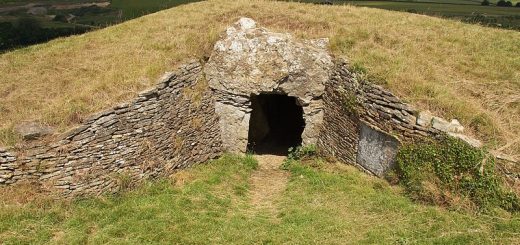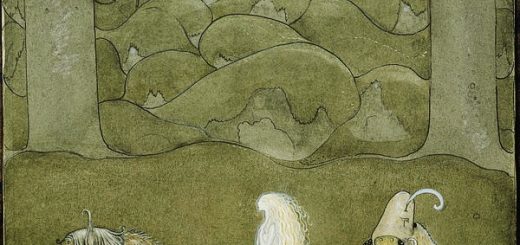Folklore on Wildfowl?
Hey all. Appologies for my sustained absenses from the site, but I’m hopefully about to make up for it with a headscratcher:
Hey all. Appologies for my sustained absenses from the site, but I’m hopefully about to make up for it with a headscratcher:
I’m doing work on Fife Coastal Path- namely the interpretations boards, and I’m looking for something different, and quite unique to my interestes in folklore. Basically I’m looking for any info on wildfowl. I’m confident I’ve found enough on waders, but something on a few species of ducks and geese that frequent a couple of the areas that the boards will be going into is what I’m really after. Here’s a list of some of the more abundant dudes:
Shelduck
Teal
Wigeon
Greylag Geese
Pink-Footed Geese
There are eiders, but I’ve got osme nice stuff on them, such as sustainable harvests of the down that the females moult during the breeding sseason, usualyl done in Scandinavia, but probably done here until we moved away from using down. Also as i understand it eiders were the first birds to be given protected status, by St Cuthbert, although I need to look more into this.
I’m familiar with the barnicle goose/goose barnicle thing, but barney geese only really fly over, if at all, when migrating and I don’t know if we get that specific species of barnicle.
Any help and info would be greatly appreciated! Even if ye dinnae ken, if you know somebody who might then please feel free to let them know 🙂
Cheers folks




Re: Folklore on Wildfowl?
Hi.
I remember in Angus and the Mearns there was an old tradition of hanging dead ducks (teal, mallard etc) head down as part of the practices to exorcise evil spirits from a farmhouse.
Here’s a little more Scottish folklore about wildfowl and other animals from Lamont-Brown’s Scottish Superstitions:
The whistling noise made by the Golden Plover was said to give warning to sheep of nearby danger
The Lapwing was said to be the departing soul of a dead human and its cry was considered a bad omen
In some localities the Cuckoo was said to be a stormbird. In the northern counties the Cuckoo is called Gowk and "gowk-storm" is the name of the foul weather foretold by its song.
The Yellowhammer or Yellow-yorling was said to "drink a drop of the Devil’s blood every May Day"
The Swan was believed to have special connections to the spirit world and to be protected from "above", so much anyone who harmed a Swan would die within a year. [cfr with the role played by the Swan in Finnish mythology: the hero Lemminkainen set out to kill a swan to win the hand of a fair maiden and dropped dead in the water the moment his arrow struck the bird]
The Wren has a mixed fame. Again according to Lamont-Brown this stems from the fact it was held as especially sacred by the Druids and then cruely persecuted by the first Christian missionaries from Ireland. Near the Borders it is said if a Wren is killed deliberately all the local cows will give blood instead of milk.
Coal miners don’t like to see Pigeons fly near the pitheads as it is a bad luck omen. Also never, ever stuff a cushion or pillow with Dove or Pigeon feathers.
Leave the Rook’s nest alone for it is bad luck for the whole parish if a rookery is destroyed or threatened.
The Swifts were said to be the "sould of the damned" condemned to fly over the places they inhabited in mortal life for their misdeeds.
The Hedgehog was believed to suck milk from the cows in the fields and it was widely believed to be even more crafty and cunning than the fox.
Seagulls were believed to be the souls of sailors and fishermen lost at sea.So it was widely believed to be very unlucky to kill a seagull [cfr The Rhyme of the Ancient Mariner]. Should a Seagull fly against the window of a house it was believed to be an omen of immediate danger for any dweller of the house who made a living on the sea. Three Seagulls seen together were always a death omen for seafarers.
Porpoises were held to be a very lucky omen. Not only they kept sharks at bay but a group of them playing near a ship was sign of a safe journey or good catch.
It’s impossible to overstate the importance of Seals in Scottish folklore. Suffice to say some clans were said to be descended from Seals who took human form to marry humans. Among these are the Mackays of Sutherland, the MacCodruns of North Uist and the MacPhees of Colonsay.
A Mackerel, Herring or Pilchard should always be eaten from tail to head ot the fish would turn their heads away from the nets.
Hope this helped you out!
Re: Folklore on Wildfowl?
Hey that’s great Mauro, ta very muckle 😀 Quite a few good pieces in there , I really appreciate your help!
Re: Folklore on Wildfowl?
I’ve been looking but not come up with anything Urisk. Good to see you back on the forum again:)
Re: Folklore on Wildfowl?
Hi, nae worries Ian! It was too long, but I’m back now! 😀 How’s things?
Re: Folklore on Wildfowl?
Urisk are you doing Beltane walks this year?
Re: Folklore on Wildfowl?
‘Fraid not 🙁
I don’t have much longer with my employers I’m afraid. They’re cutting me loose and they’re nto very nice people, shall we say.
Re: Folklore on Wildfowl?
Oh dear, I hope you find something suitable mate.
Re: Folklore on Wildfowl?
Well I got things in the bag, mate. Dinnae worry 😉 I’ll find something.